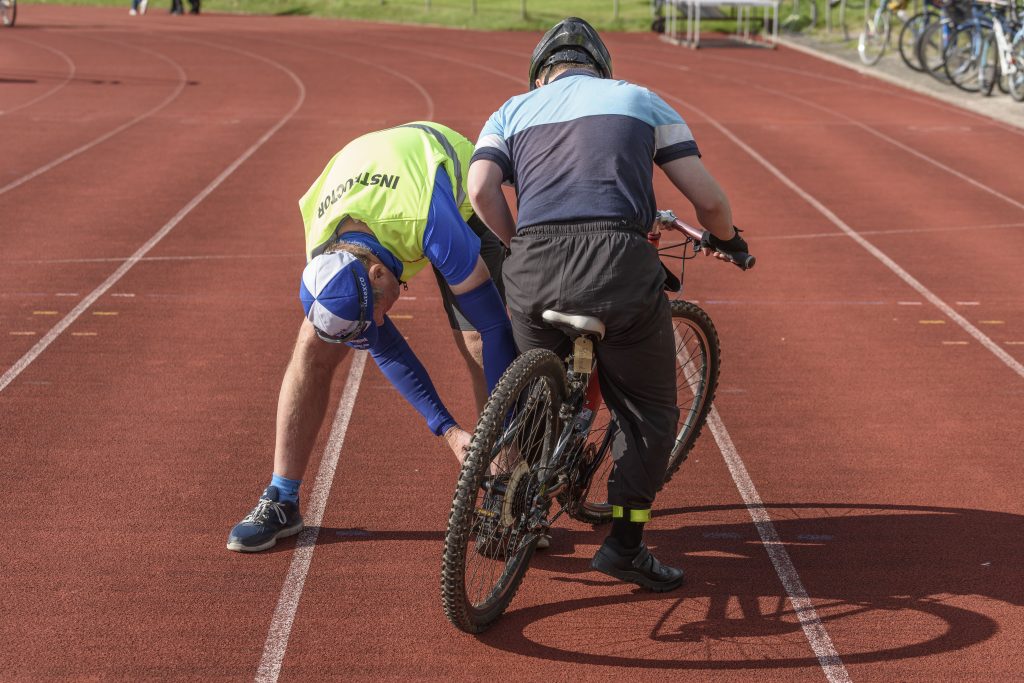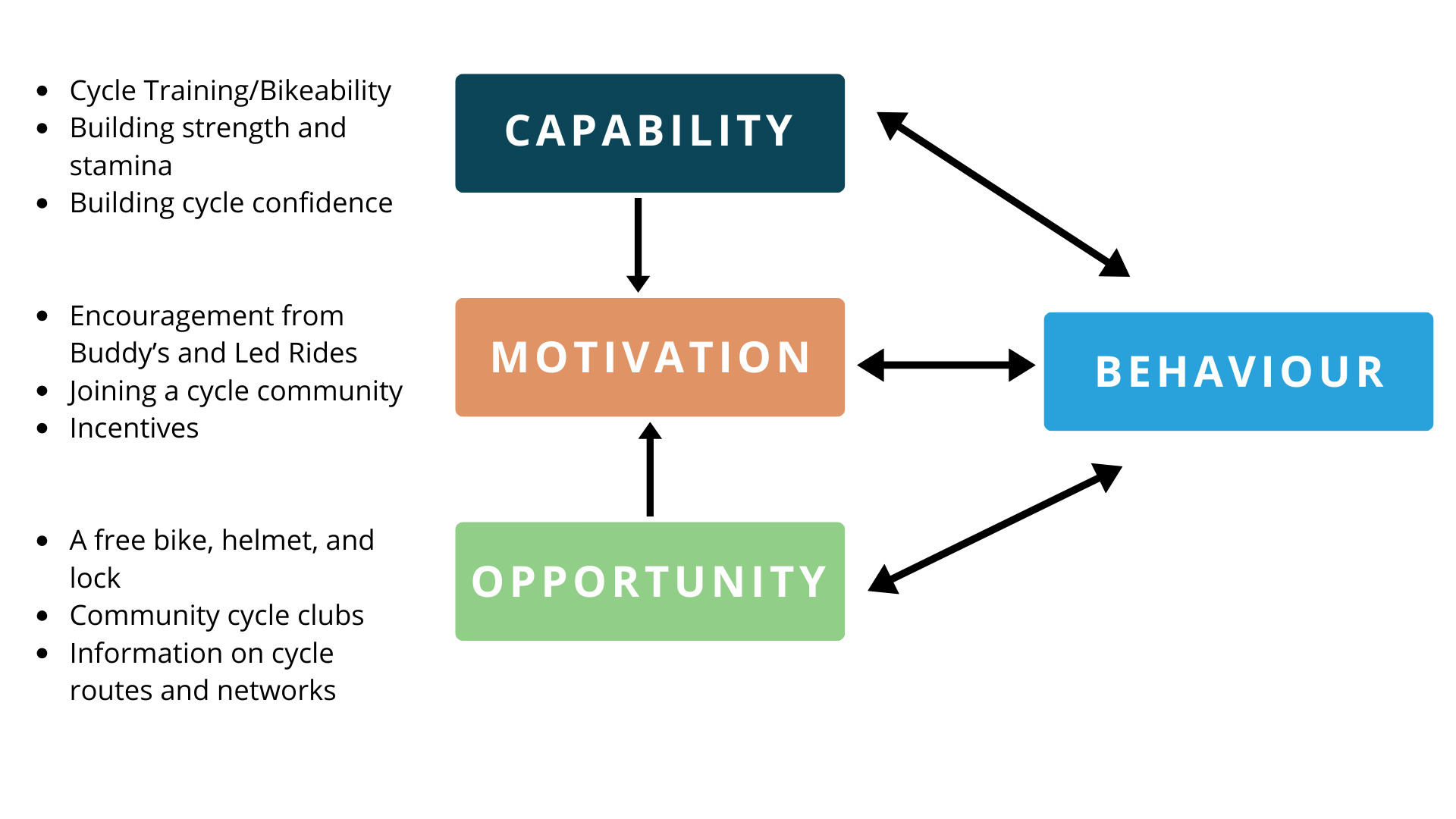Benefits of free bikes for individuals and communities
Partner with us
The Active Wellbeing Society has distributed over 10,000 free bikes to people who do not have the resources to buy their own. The impact has been significant.
- Participants say the bike has changed their life and improved their health and wellbeing – they can now travel independently for free.
- The bikes are used for getting to work, school, the shops, and seeing friends.
- Delivery teams are reporting significant increases in community cohesion as bike recipients bond as groups.
- The schemes provide wraparound support for cyclists through weekly learn to ride, cycle confidence and bike maintenance sessions, led bike rides and e-newsletters.
- Volunteering has taken off in each area as have community cycling clubs.
Benefits for Individuals
Free bikes mean we can provide inclusive and sustainable travel for individuals who would not be able to afford to buy their own. Helping them to:
- Improve their physical and mental health and wellbeing.
- Build pride and confidence.
- Network socially.
- Save money on transport.
- Access cheaper food retailers
- Improve employment opportunities.
Benefits for Places and Communities
Getting people peddling also brings significant community benefits:
- Provides access to cycling in the most disadvantaged areas.
- Tackles health, social, and economic inequalities.
- Builds community cohesion.
- Increases transport equity.
- Improves social mobility.
- Supports economic growth.
- Lowers carbon emissions through sustainable travel.
- Creates healthier, greener, safer, and less congested places.
Building Behavioural Change Pathways
Developing a new active travel habit is an important part of reducing physical inactivity and health inequalities. We have seen how our Community Bike Scheme has led to behaviour change among participants. We work with the COM-B model as it provides an excellent framework for developing behaviour change techniques. It starts by looking at barriers and then considers whether individuals have the Capability, the Opportunity, and the Motivation to become more active and the interventions required to maintain new active travel habits.

The COM-B model:


